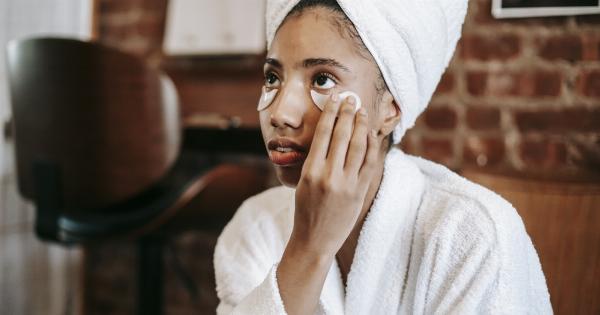Ear blushing is a phenomenon that many people experience but few understand. It is characterized by the sudden reddening or flushing of the ears, often accompanied by a warm sensation.
While it may seem like a trivial issue, ear blushing can be embarrassing and even affect one’s self-esteem. In this article, we will delve into the truth behind ear blushing, its causes, and possible remedies.
What Causes Ear Blushing?
There are several factors that can contribute to ear blushing. One of the primary causes is the dilation of blood vessels in the ears. This dilation occurs due to increased blood flow to the area, causing the skin to turn red.
Stress and anxiety are known to trigger this response, as they lead to the release of adrenaline, which in turn causes blood vessels to expand.
Another common cause of ear blushing is embarrassment or extreme emotions. When we feel embarrassed, our bodies release stress hormones that can affect blood vessels, including those in the ears.
This can result in ear blushing as a physical manifestation of our emotional state.
Is Ear Blushing Normal?
Yes, ear blushing is a normal bodily response. Everyone experiences it to some degree at certain times in their lives. Some people may be more prone to ear blushing due to genetic factors or underlying health conditions.
It is important to remember that ear blushing does not necessarily indicate a serious health problem, although it can be a symptom of an underlying issue that requires medical attention.
The Psychological Impact
While ear blushing may seem like a minor issue, it can have a significant psychological impact on those who experience it. The visible redness of the ears can be embarrassing and cause individuals to feel self-conscious in social situations.
This self-consciousness can lead to anxiety and avoidance behaviors, such as avoiding social interactions or wearing clothing to cover the ears.
Some individuals may develop a condition called erythrophobia, which is a fear of blushing or becoming red in the face. This fear can further exacerbate the psychological impact of ear blushing, leading to a cycle of anxiety and avoidance.
It is important to address both the physical and psychological aspects of ear blushing to minimize its impact on daily life.
Tips to Manage Ear Blushing
While it may not be possible to completely eliminate ear blushing, there are several strategies that can help manage and reduce its occurrence:.
1. Deep Breathing and Relaxation Techniques
Practicing deep breathing and relaxation techniques can help calm the body and reduce stress levels. This, in turn, can help regulate blood flow and minimize the chances of ear blushing.
2. Cognitive Behavioral Therapy (CBT)
CBT is a therapeutic approach that helps individuals change negative thought patterns and behaviors. This type of therapy can be beneficial for managing the psychological impact of ear blushing and promoting self-acceptance.
3. Medication
In some cases, medication may be prescribed to help manage the physical and psychological symptoms of ear blushing. This can include beta-blockers, which can regulate blood pressure and reduce blood vessel dilation.
4. Avoiding Triggers
Identify and avoid triggers that prompt ear blushing. This could involve removing oneself from stressful situations, practicing relaxation techniques before potentially embarrassing events, or seeking support from friends and loved ones.
When to Seek Medical Help
While ear blushing is generally harmless, there are instances where it may be necessary to seek medical help.
If ear blushing is accompanied by other symptoms such as dizziness, shortness of breath, or chest pain, it is important to consult a healthcare professional to rule out any underlying medical conditions.
If ear blushing significantly affects one’s quality of life, self-esteem, or ability to function in daily activities, it may be helpful to seek guidance from a therapist or counselor specializing in anxiety disorders.
Conclusion
Ear blushing is a common and often misunderstood phenomenon. While it can be embarrassing and have a psychological impact on individuals, it is important to remember that it is a normal bodily response.
By implementing strategies such as deep breathing, cognitive-behavioral therapy, and avoiding triggers, individuals can manage ear blushing and regain their confidence.































